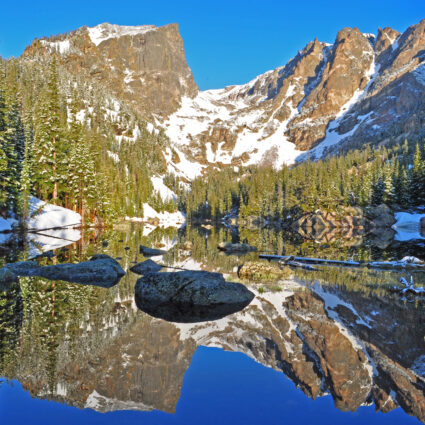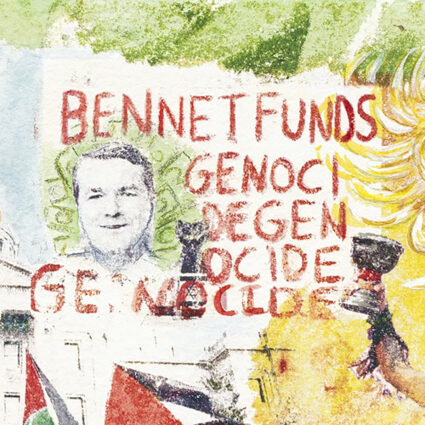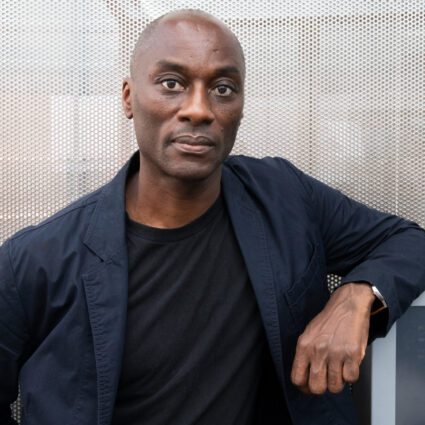Gulf Coast Anthropocene, the latest exhibition at Project Row Houses in Houston, features works that stray from traditional narratives of the climate crisis to center the Black and brown communities most at risk.
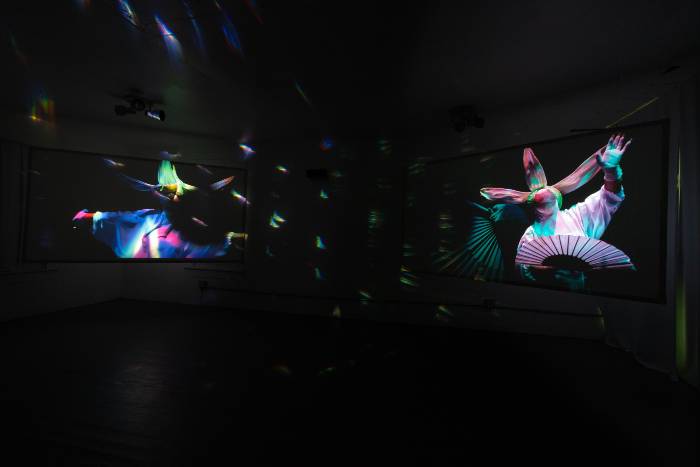
Gulf Coast Anthropocene
July 31-December 5, 2021
Project Row Houses, Houston
On January 10, 1901, a well at the Spindletop oilfield in Beaumont, Texas struck the motherlode, gushing 100,000 barrels of oil a day for nine days straight. On that day, the Gulf Coast—Houston, above all—became one of the world’s leading players in what would become the most unfathomably lucrative, devastatingly destructive industry in human history: oil and gas. These have created the jobs that have shaped every demographic and cultural influence here; built our museums, universities, parks, freeways. They’re the reason America’s first man on the moon was directed there from a Houston suburb, and what made our world-class medical center possible.
Those are the positives, at least. The petrochemical industry has also made Houston and the surrounding Gulf Coast cities that engage in the industry one of the most toxic, climatically dangerous places to live in the United States. University of Houston history professors Michael V. Melosi and Joseph A. Pratt posit in their essay “Energy Capital of the World? Oil-Led Development in Twentieth-Century Houston” that Houston “may be some sort of sacrifice zone for other parts of the world seeking its vital energy and chemical products.”
Project Row Houses’ latest group exhibition, Round 52: Gulf Coast Anthropocene, takes this idea as its jumping-off point. Works by artists from Houston, New Orleans, Miami, New York City, and the California Bay Area together present a narrative that identifies the culprit of environmental devastation (extractive capitalism and lack of environmental connection broadly, and the Gulf Coast petrochemical industry specifically) and the possibilities offered to us by the environment.
In her recorded performance piece Ghost Orchid: Fever Dream, Miami-born, New Orleans-based visual artist Cristina Molina uses dance and monologue to personify the ghost orchid, a rare species of the flower found only in Cuba and the Florida Everglades that is currently threatened by land development. In the piece, the flower’s voice is that of the Earth itself, chiding humankind for its hubris, lack of knowledge, and desire to own and exploit.
California-based artist Whit Forrester’s multimedia, interactive installation Venus Regenerating Detriment Potentials, situated in the house next to Molina’s work, acts as a response to the call of the orchid. Large-scale mixed-media collages featuring plants surrounded by gold-foil halos in front of industrial backgrounds dominate the gallery space, interspersed with small photographs of roses with QR codes beneath them that lead viewers to articles and lectures on cutting-edge nature-based research across scientific disciplines. Viewed as a diptych, the installations evoke ancient and contemporary spiritual awe.

Houston artist and architect Preston Gaines’s installation Flora creates a “green house” out of the exhibition house, simulating a living room dominated by the lush, tropical plants that thrive in Houston’s climate, plants whose presence is amplified by floor-to-ceiling mirrors. From that immersion, viewers step into a sitting area reminiscent of a traditional Black family home, suggesting that the way forward is through radically changing our proximity to and relationship with our environments.
In striking contrast to most discussion of the climate crisis, and where it makes its most searing points about the Gulf Coast as sacrifice zone, Gulf Coast Anthropocene centers the disproportionate suffering of Black communities, presenting it as a logical and intentional result of white supremacist capitalism. The “library” of Preston Gaines’s simulated Black family living room, for example, contains books that are both hyperlocal (Invisible Houston by Texas Southern University professor Dr. Robert Bullard) and broader-reaching (The Dawning of the Apocalypse by Gerald Horne and A Billion Black Anthropocenes or None by Kathryn Yusoff), all exploring the fundamental link between Earth-destroying extractive capitalism and the legacies of Western settler colonialism and chattel slavery.
The exhibition further argues that this history makes Black communities the most prepared to meet the challenges of collapse in two works: New York-based artist Xaviera Simmons’s Sugar Water and New Orleans multidisciplinary artist Kai Lumumba Barrow’s Phantom of the Anthropocene. Simmons’s work—videos that variously depict a dance piece where three Black and brown dancers exhale deeply with every move; a performance piece featuring the artist placing harvested flora into a basket-bouquet; and a text-based piece detailing the centuries of racist oppression and resistance that have been the substance of the Black American experience—does not land its message on first viewing, perhaps because everything is presented to the viewer at once. With multiple viewings, however, the themes of ancestral connections to the land, the right to rest, and the coexistence of strength and softness necessary for survival without brutality are powerfully conveyed.
Barrow’s work, though, is the standout of the show. The installation, which depicts a post-collapse landscape, is the only one that has no cooling source, emphasizing the oppressive heat that would be inescapable in the world she depicts. The room is filled with rubble with amalgams of plant matter suspended throughout, suggesting the new life forms that will take shape in the aftermath of infrastructure collapse. Charcoal is placed in a basket of sage meant to be ritually burnt, and visitors are invited to write messages on the walls with this primal writing implement. The most striking element, though, is the bales of cotton, chains, and animal bones near the center of the space. Juxtaposing the crushing oppression of the Black American past with an imagined future that is sure to be equally oppressive, Barrow’s piece seems to say, “We will withstand the worst of conditions with our wits, creativity, and ancestral guidance, making something beautiful out of nothing the way we always have. We have everything we need to survive.”
Were the exhibition’s focus exclusively on Black communities, it would be not just powerful, but a radical and much-needed change to the deficit-first language that is generally used to describe Black people’s condition in the United States. However, the exhibition text emphasizes that Black Americans’ and Indigenous people’s struggles in the Anthropocene are inextricably linked, even stating that “climate change is a Red, Black, and Green issue.” With this language, one would expect that works by Indigenous and Afro-Indigenous artists would be a part of the constructed narrative. Unfortunately, Indigenous artists are inexplicably absent, and the mere existence of Indigenous people is relegated to passing mentions in the exhibition statement and parts of a few artists’ installations and work statements, sometimes appropriatively.
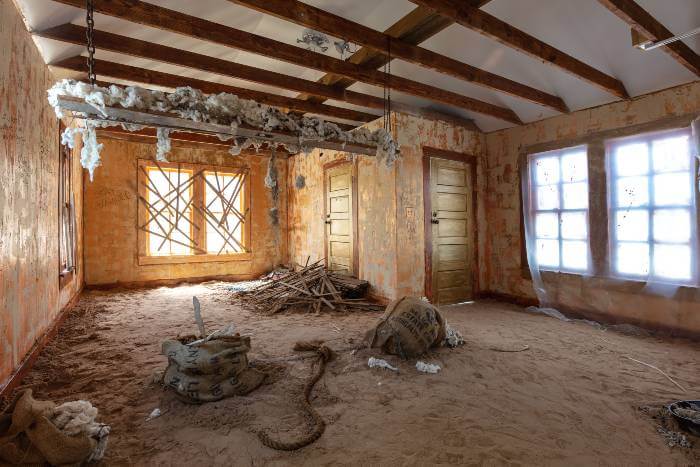
With the longstanding and largely under-covered activism by Indigenous water protectors to stop the building of oil pipelines across America and most recently Line 3, a Canada-U.S. tar sands pipeline expansion proposed by the Canadian pipeline company Enbridge, the omission becomes glaring. The overall message of the round—we have everything we need to survive—is an important one for subaltern populations, but when the “we” excludes some of the most marginalized, it falls short of its promise.
